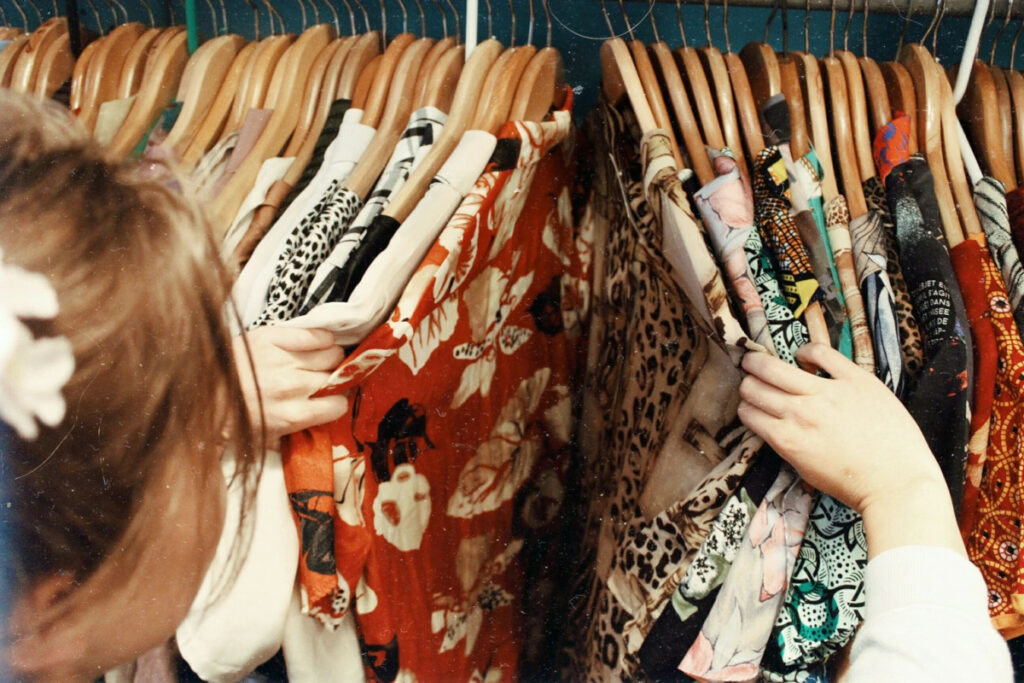
We are constantly saturated with buzzword terms such as ‘eco-friendly’, ‘sustainable’ and ‘green’. But what do these terms really mean? There is no legal significance to back these claims which is why so many brands can get away with using them and as consumers, it is our responsibility to question these marketing strategies to understand them for what they often are: Greenwashing.
It is increasingly difficult for consumers to differentiate between fashion brands that are genuinely making environmental efforts from those that are merely ‘performing’ sustainability. Let’s be honest, there is no way for a fast fashion clothing brand to be truly sustainable. In fact, sustainability goes against the entire notion of fast fashion wherein clothing is created with the intention of being discarded due to poor quality of materials and fabrication. In addition, these cheap clothing items are made to replicate catwalk styles that quickly go out of fashion thus giving consumers another reason to discard them. These discarded garments are detrimental for the environment.
Each year, Irish people dump on average 225,000 tonnes of clothing, which is a huge waste of water and resources. In fact, the textile industry is responsible for one of the highest sources of global emissions. According to Oxfam,
“It would take 13 years to drink the amount of water needed to make one t-shirt and one pair of jeans”.
It was recently outlined in the Waste Action Plan for a Circular Economy that the amount of clothes bought per person in the EU between 1996 and 2012 increased by 40% and more than 30% of clothes have not been worn for at least a year. In addition, it was estimated that in 2017, nearly 26kg of textiles were consumed per person per year, of which 11kg were discarded! These discarded textiles typically end up in landfills or incinerators.
Which brings me to my next point: Only 1% of all textiles worldwide are recycled into new textiles. A shocking figure, I know, and the reason for this is because the technology needed to recycle textiles into virgin fibres is only beginning to emerge. The solution shouldn’t be to find new technologies to do this, but rather to have less discarded waste to deal with in the first place. The responsibility lies on us: Fast fashion will continue to thrive as long as there is consumer demand.
How can we consume less?
1. Wear
Well firstly, get as much wear as you possibly can from the clothes you already own. This can be done by properly caring for your garments by following the washing guidelines on the label, washing them on the delicate cycle at 30°, and avoiding the use of a dryer.
2. Repair your clothes
Learn how to easily mend wears and tears in your garments through the help of YouTube videos or by asking a family member or friend. It could even become a fun social meetup!
3. Upcycle your clothing
This can also be done with the help of YouTube videos. Do you have a dress that has gotten too tight and would make a great top? Jeans that would make great shorts? Or even swimming togs that would look better as a bikini? Get creative! If you don’t have a sewing machine, search ‘no sew’ in the search bar for a ton of great and simple upcycle projects.
4. Swap, Donate or Rent
If you want to update your wardrobe, there are a ton of Facebook groups where you can swap clothing or other items. Throwing a clothes swap party is a great way to bring friends together and to refreshen your wardrobe. If nothing tickles your fancy, there are some gems to be found in charity and vintage shops and you can donate the clothes you’ve grown bored of there too. It is also becoming increasingly popular to rent clothing, which is great for satisfying the dopamine hit that comes with buying new, without costing the planet! Renting one piece of clothing can save up to 24% water, 6% energy, and 3% CO2 emissions, when compared to buying a new item. Try it out for yourself on sites such as Happy Days, Designer Room or Greens are Good For You to name a few.
5. Recycle
If your old t-shirt or jeans are beyond repair, you can recycle them easily by cutting them and making them into cleaning cloths for your home. Bringing them to a clothing bank should be the absolute last resort, as they will most likely end up in a landfill or incinerator.
6. Avoid Synthetic Fibers
It is estimated that 35% of all microplastics in the ocean are from textiles. This is because garments made from polyester, nylon, acrylic, and other synthetic fibers shed tiny pieces of plastic when they are washed. Try and opt for cotton or hemp instead. You can also opt for a washing machine bag to put synthetic clothes into, which filters out these microplastics, such as the Guppyfriend Washing Bag.
7. Buy From Sustainable Manufacturers
Look for clothing brands which are properly committed to sustainability, and which can be backed by a label or NGO such as the Global Organic Textile Standard (GOTS). Check out this IMAGE article for Irish clothing brands that are doing great work.
